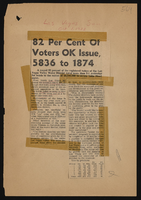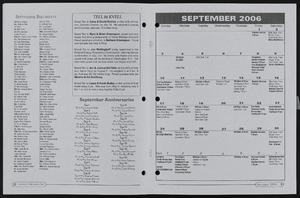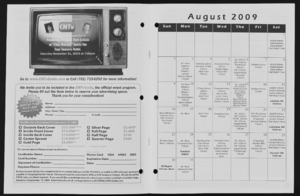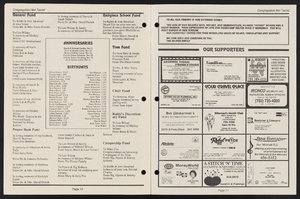Search the Special Collections and Archives Portal
Search Results

Letter from Walter R. Bracken (Las Vegas) to William Reinhardt (Los Angeles), March 28, 1941
Date
Archival Collection
Description
Table showing meter readings of gallons of water used during a twenty-day period in March 1941. Bracken states the meters are manufactured by Sparling, and suggests they are over-registering.
Text

Letter from E. E. Bennett (Los Angeles) to William Reinhardt, January 4, 1952
Date
Archival Collection
Description
The Nevada State Engineer suggested that the Las Vegas Valley Water District purchase 1200 acres of "water bearing lands," but the District only wanted to purchase 679 acres.
Text

Nevada Library Notes
Date
Description
Nevada Library Notes, Vol. 1-4 issued by the Nevada State Library. Materials about the news of library activities and articles for publication by Nevada librarians. It also contains minutes of the 18th annual convention.
Text

Statement urging special legislative session on racial discrimination, April 7, 1968
Date
Archival Collection
Description
Flora Dungan's statement to Governor Paul Laxalt requests action regarding civil rights issues and the Nevada Equal Rights Commission.
Text

Transcript of interview with Yorgo Kagafas by Claytee White, January 14, 2010
Date
Archival Collection
Description
Yorgo Kagafas is a self-described "urban guy." He became an Urban Planner for the City of Las Vegas in 1999. A farm boy from Ohio, he was educated at The Ohio State University, served in the US Navy and earned a M.A. in Environmental Planning from Arizona State University. He came to Las Vegas with a successful grassroots experience from living in a historic Phoenix neighborhood. His unique background complemented his new job which was to implement the Neighborhood Planning Process, a proactive system for Las Vegas communities to express their neighborhood desires prior to a developer coming in with their own agenda. In this interview he explains the criteria that must be met in this process. By coincidence, Yorgo moved into the John S. Park Neighborhood. He was attracted to its central location, intact residential neighborhood, and homes with character at affordable prices. While walking his dog one day, he met neighborhood leader, Bob Bellis, and became aware of neighborhood activism that could use his expertise. Yorgo points out that the good-old-boy mentality that still existed in Las Vegas was a potential obstacle. However he, Bob, and others were able to rally the homeowners and became a textbook example of how the Neighborhood Planning Process should work. He helped them identify their main issues: 1) Mary Dutton Park rehabilitation; 2) code enforcement of property maintenance; 3) attaining historic designation; 4) halting commercial encroachment. That was the first battle, according to Yorgo. With that done, they could next devise and implement a plan, which he describes. The process officially began March 14 2000. In June 2001, the Las Vegas City Council approved the final document.
Text





